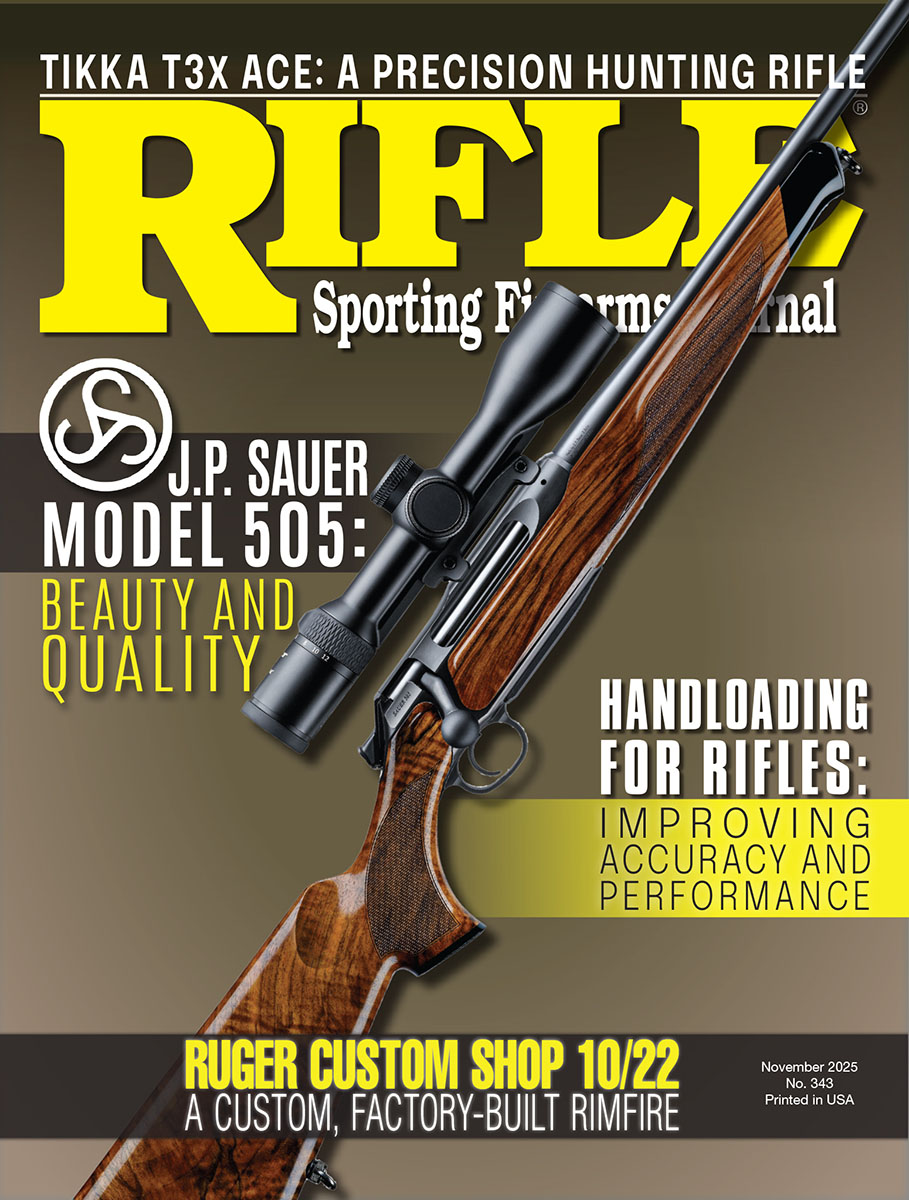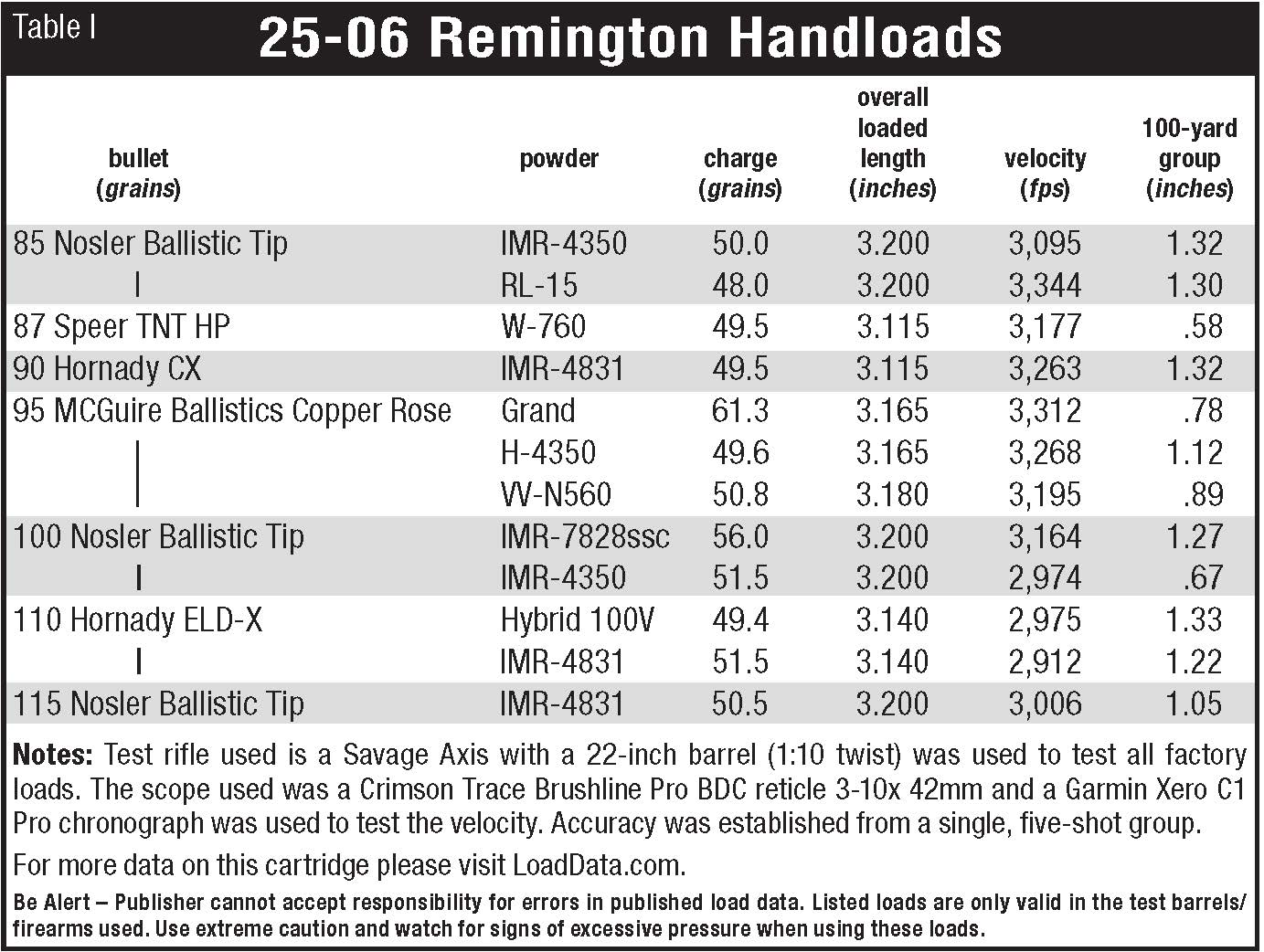25-06 Remington in a Savage Axis
Upgrading a Budget Rifle for Deer
feature By: Zak May | November, 25
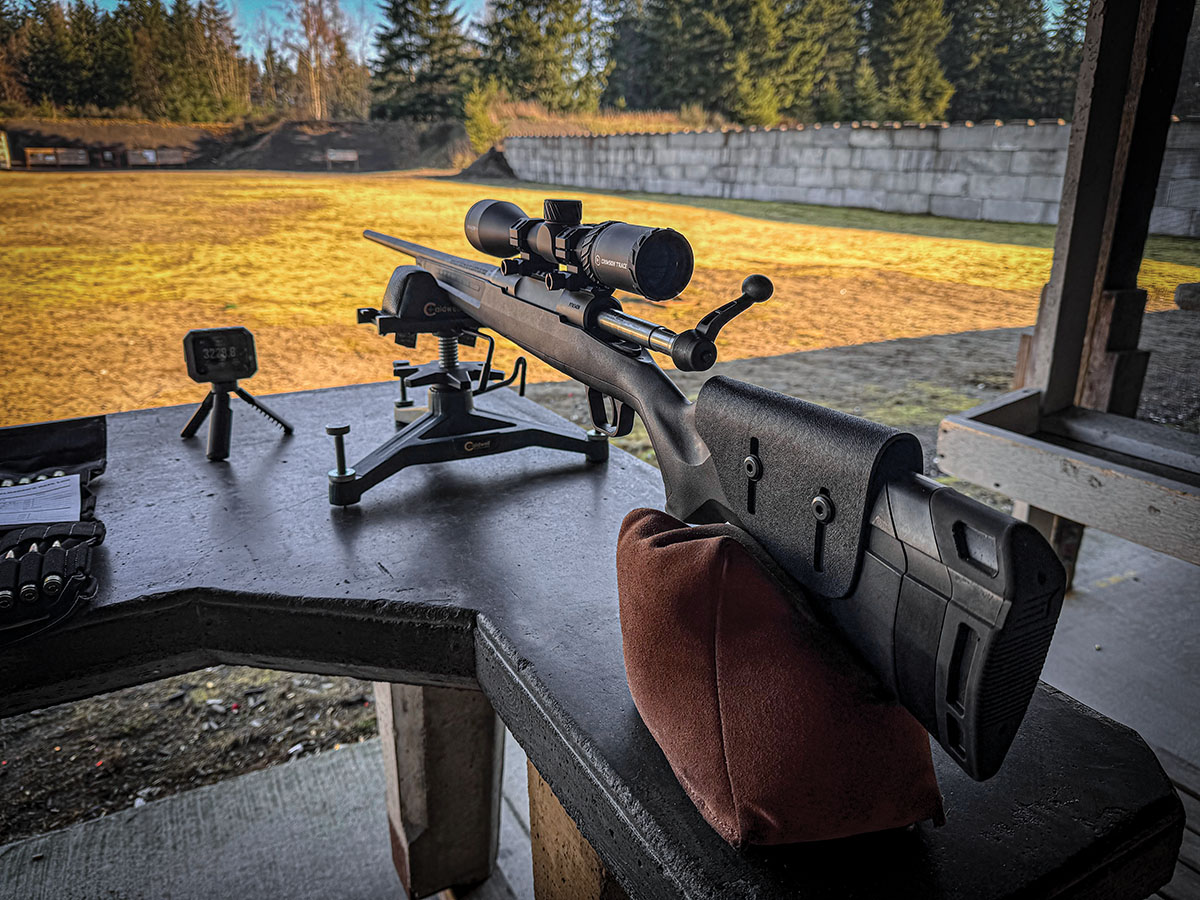
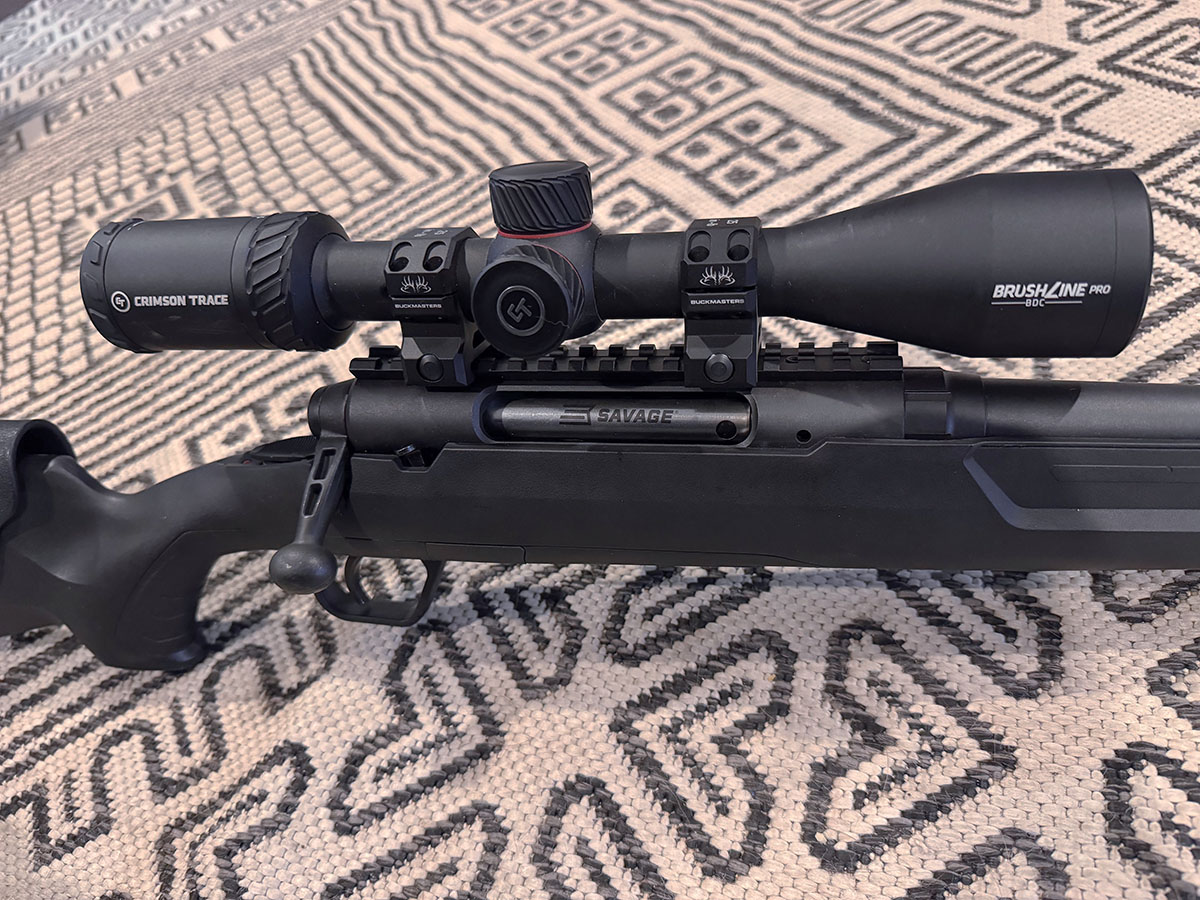
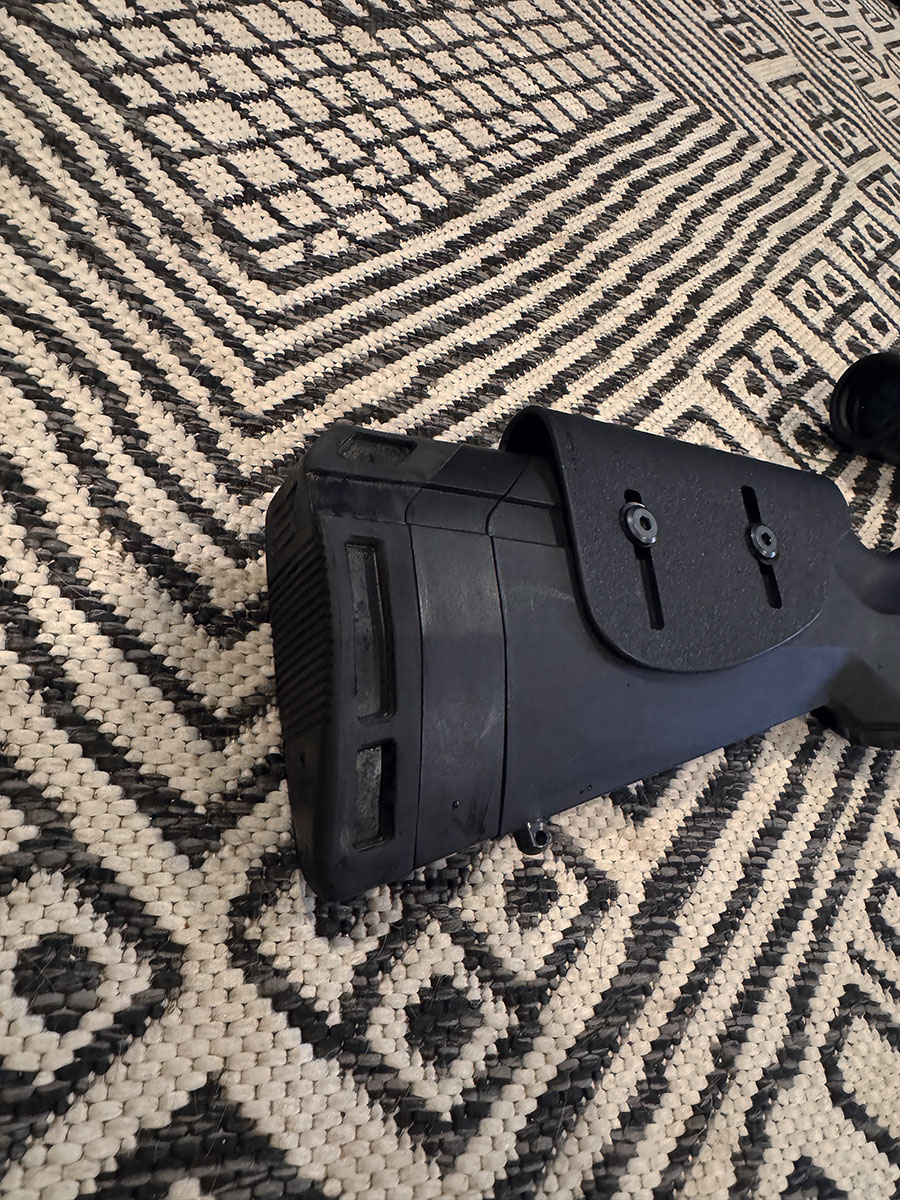
I was looking at various rifles with my boy and asking him what he wanted for his first rifle. I wanted him to shoot a 30-06 Springfield, but I knew that would be too much rifle for him. I saw a Savage Axis chambered in 25-06 Remington, and I knew right away that caliber was the one for him. It would be perfect as he could shoot light bullets down to 75 grains for coyotes and up to 120-grain bullets for Blacktail and Mule deer. I asked him what he thought, and of course, like most nine-year-olds, he was all about it and said, “Yep, it’s awesome, Dad”.
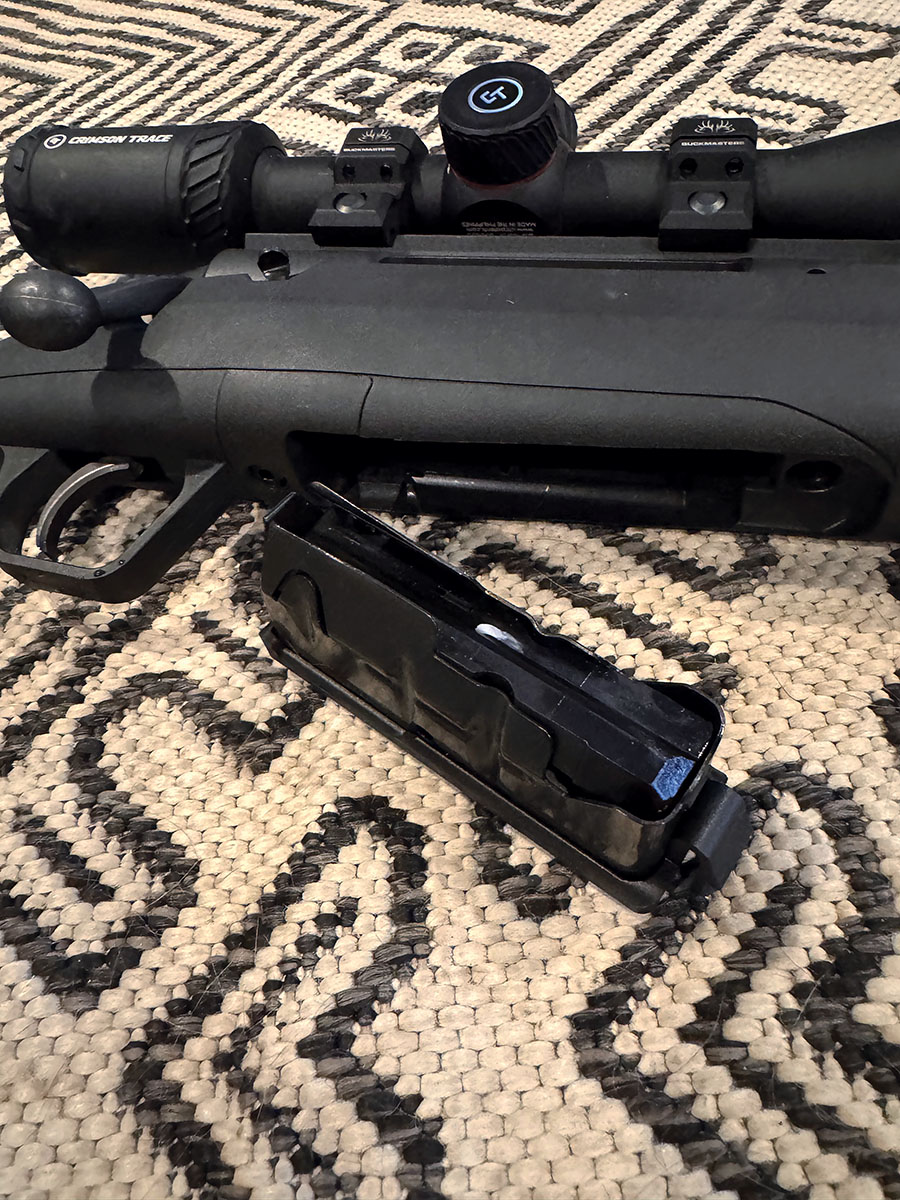
The Savage Axis comes with a black synthetic stock and a 22-inch carbon-steel barrel with a 1:10 twist that is button rifled. The rifle has a decent recoil butt pad, a 4-round detachable box magazine and a matte black finish. The trigger and bolt leave little to desire, but for less than $400, that’s to be expected. The trigger issue is easy to solve with a trigger spring from M*CARBO, which lets you adjust the trigger to be a smooth and crisp break, and right around a 2-pound pull. Before replacing the spring, I was getting around a 5-pound pull. The rifle weighs 6 pounds, 3 ounces with no scope. I picked up an Adjustable Kydex Cheek Rest from Matthews Fabrication to help him get a consistent cheek weld, as the stock combo is a little low for him. The rifle came with a Weaver 3-9x 40mm scope and Weaver 1-inch rings. I replaced it with a set of Sig Sauer Buckmaster rings and topped off the rifle with a Crimson Trace Brushline Pro BDC reticle 3-10x 42mm. This is a great budget setup for a first hunter’s rifle, weighing in with a scope of just over 7 pounds, making it easy to pack around and with less recoil.
The biggest downside of going with a more budget rifle is that the stocks are not the most rigid. When I got the rifle, the stock was free-floated on the right side of the barrel but was touching the left side. I removed the barrel action from the stock and sanded on the stock until I could fit two one-dollar bills from the front end of the stock all the way down to the action to verify the barrel was free-floated from the stock. I torqued the action back in the stock per Savage’s directions.
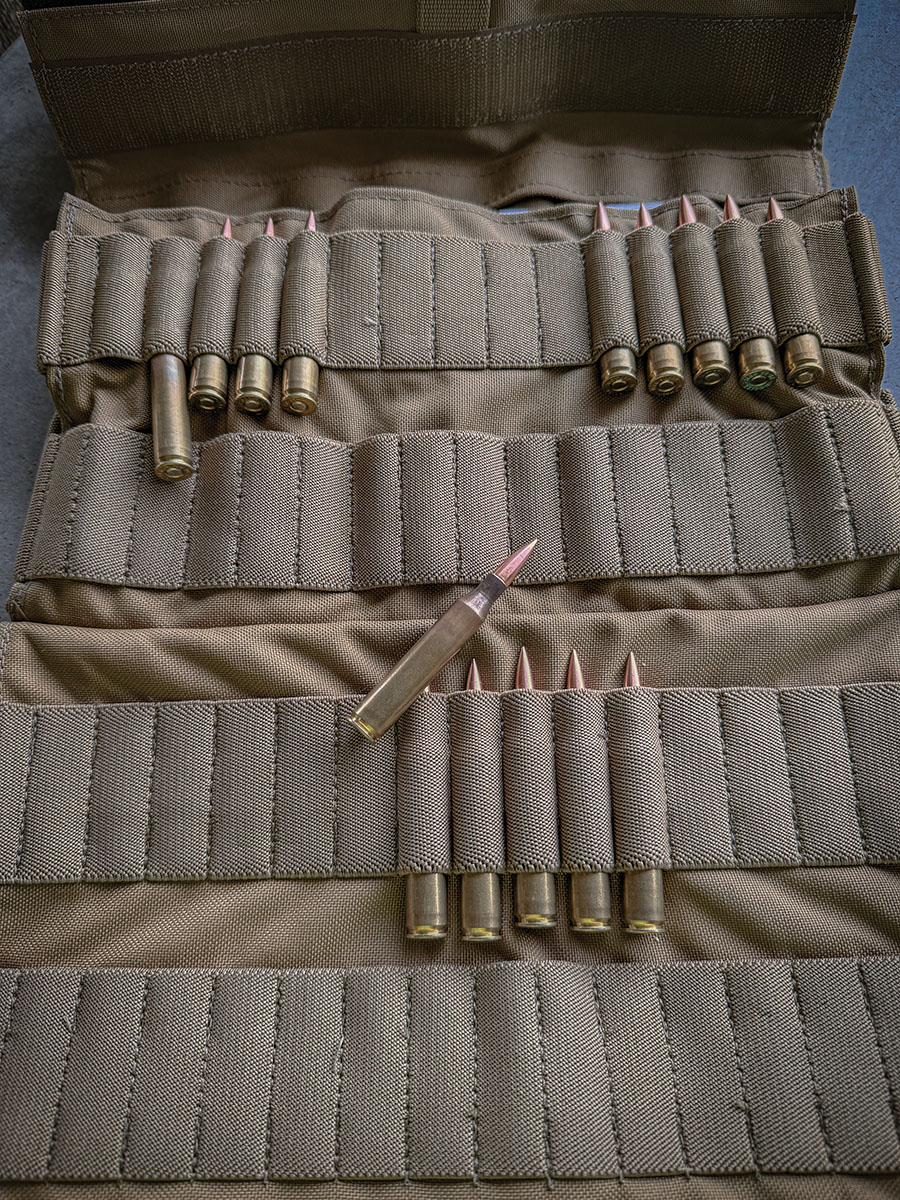
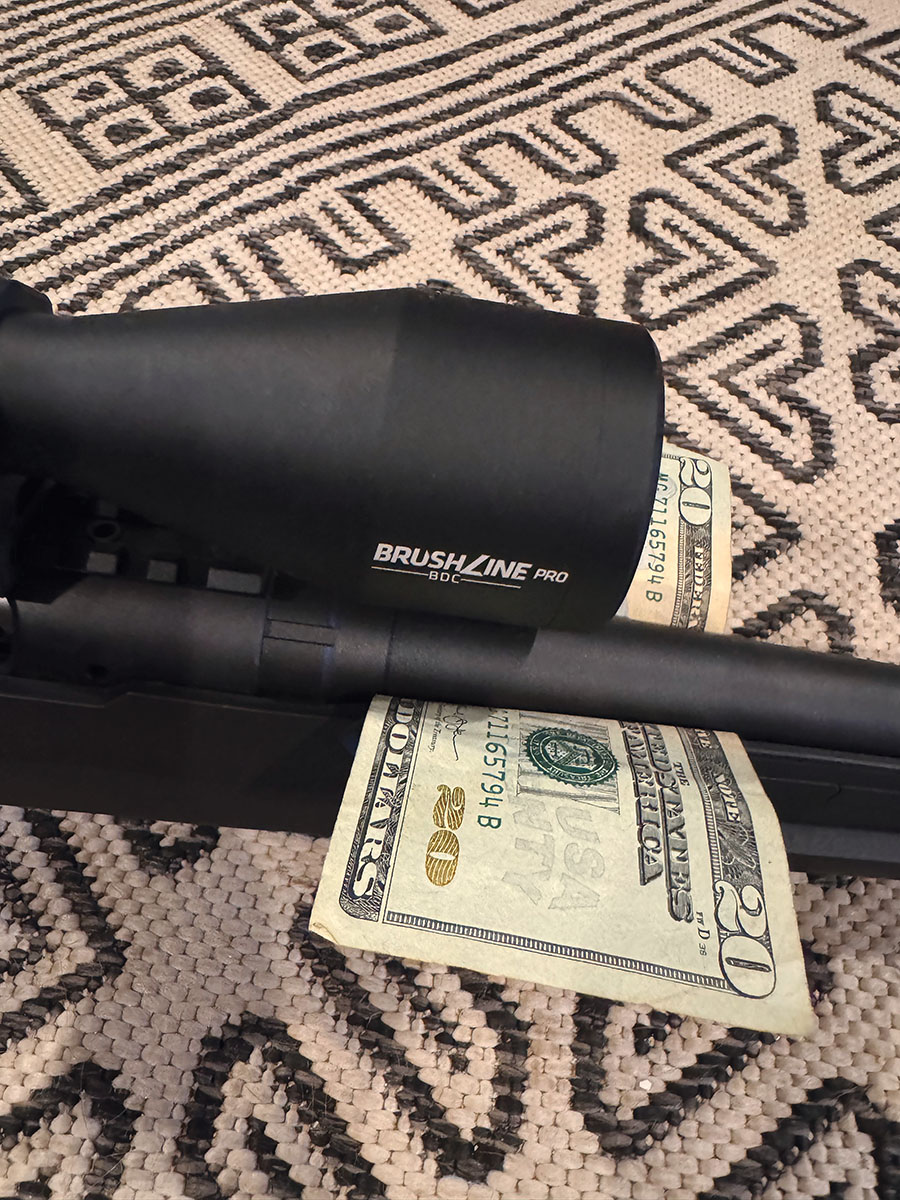
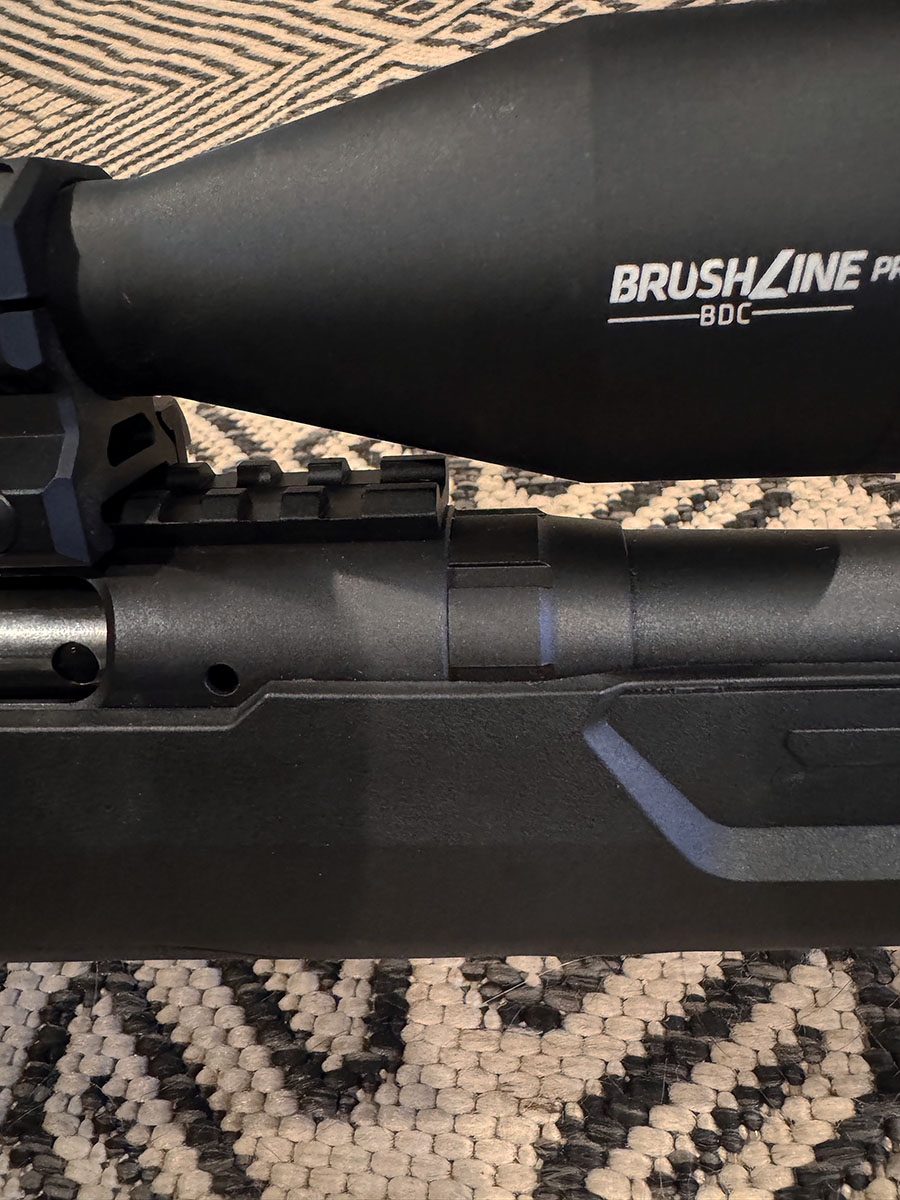
It started as a wildcat back in 1920 by A.O. Niedner, based on the 30-06 Springfield case, necked down to accept the .257-inch diameter bullet. For the next forty years, it was played with by wildcatters shooting coyotes along with big Mule deer on the West Coast. In 1969, the summer of love, Remington Arms introduced it to the public in a Remington Model 700 bolt action rifle, and the rest is history.
The problem is that budget rifles can be very picky about factory ammunition. But then again, every rifle is like a child; each one is unique and has its own preferences. This rifle was no exception; it had a mind of its own when deciding on what ammunition it liked going down the bore.
I tried six different factory offerings. The first one was an 85-grain Winchester Ballistic Silvertip. This offering shot the best out of the rifle, with a five-shot group measuring .79 inch with an average velocity of 3,412 (fps), Standard Deviation (SD) of 22, and Extreme Spread (ES) of 48. These are good numbers for factory offerings. This would be my go-to for a coyote hunt or any other varmint hunting, really flat shooting with a good amount of energy on target.
The second offering tested was a 100-grain Remington Core-Lokt, which was the worst for the accuracy test, coming in at a 2.57-inch, five-shot group. Average velocity of 3,096 fps with SD 17 and ES 50. This was a bummer for me because I have used a lot of Core-Lokt on big game over the years, and the bullet performed well on game.
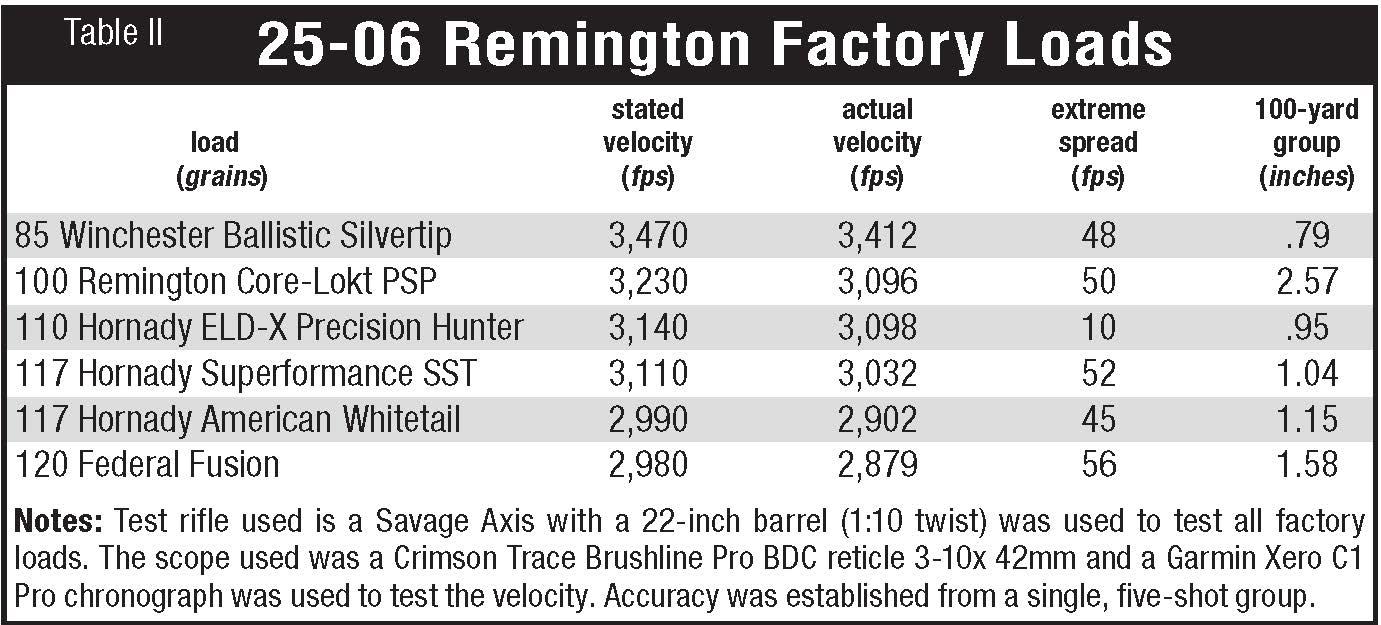
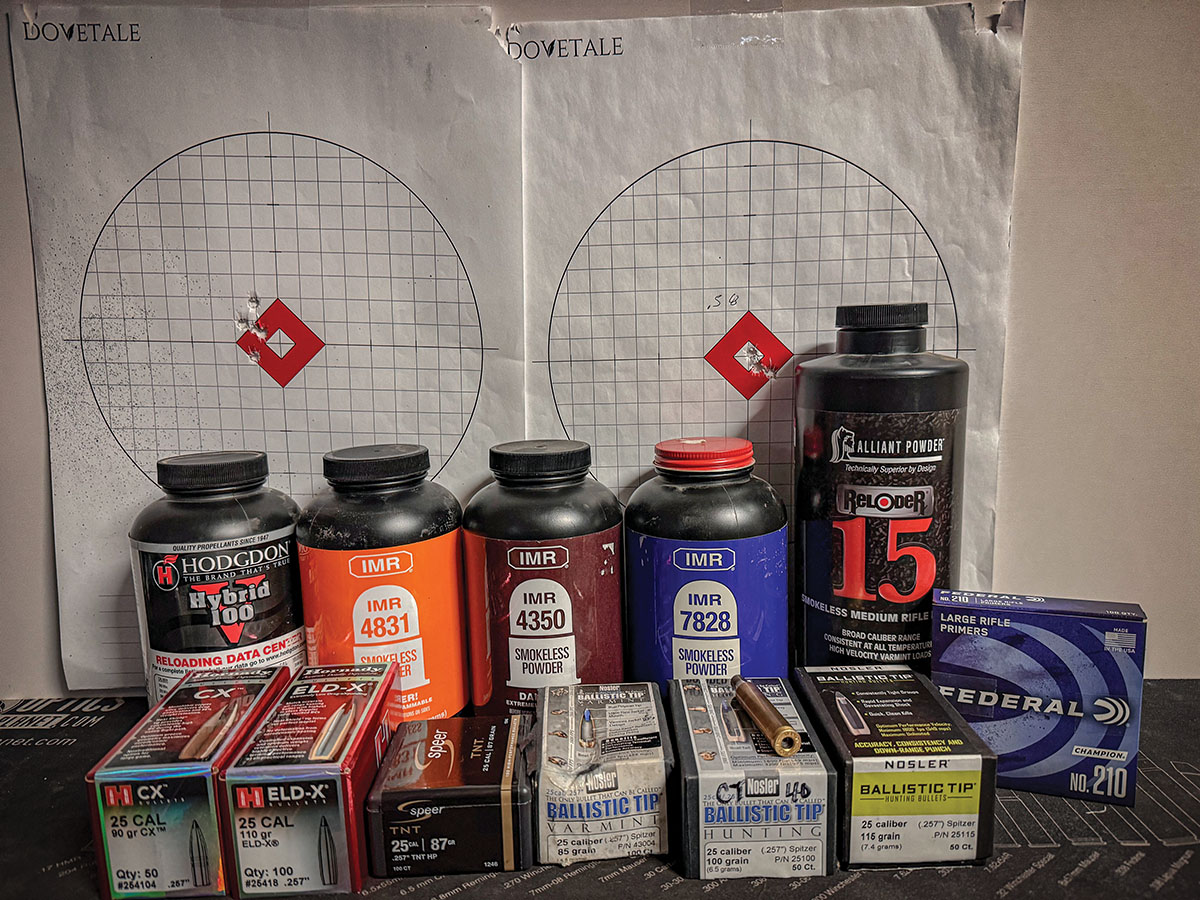
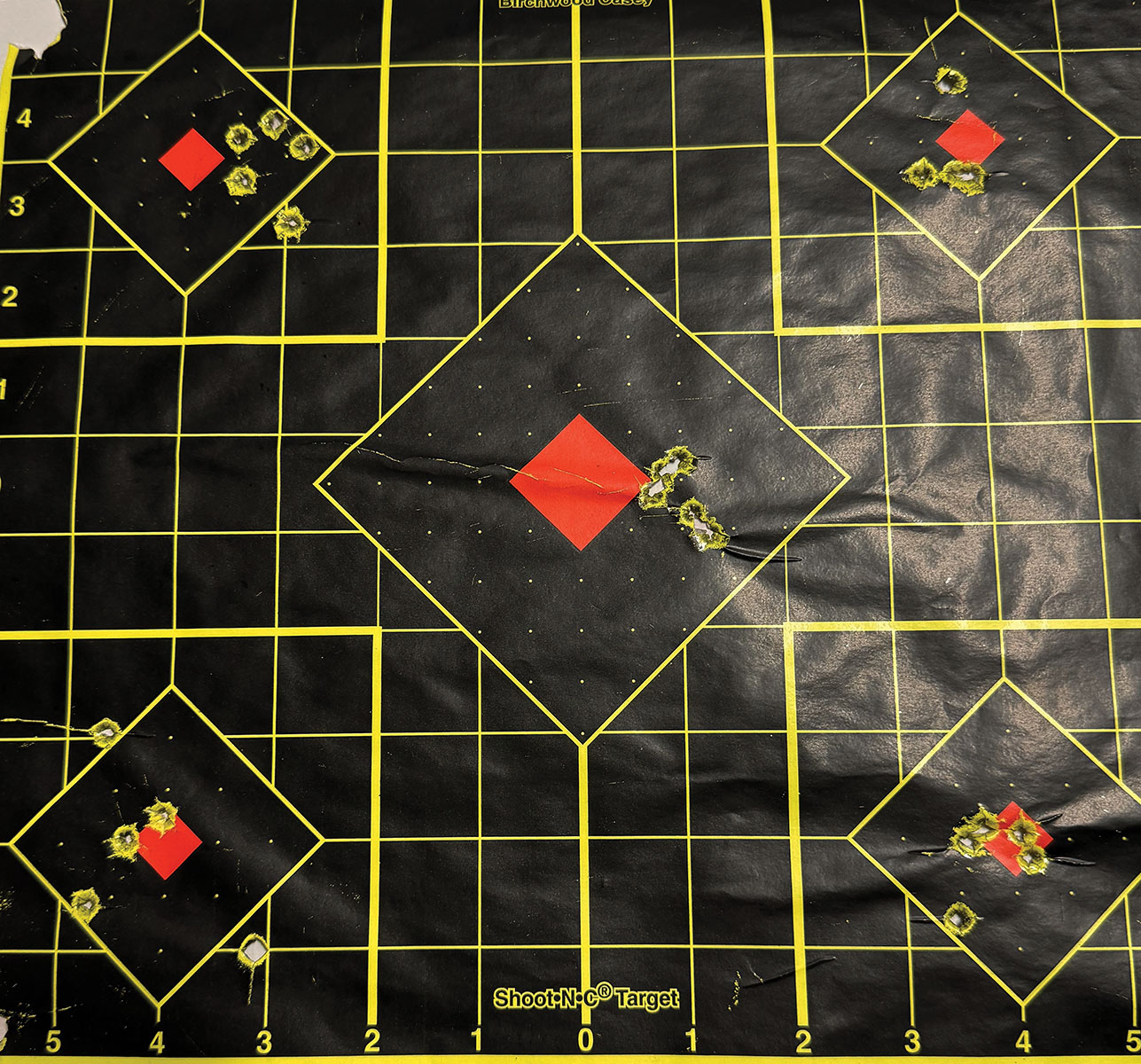
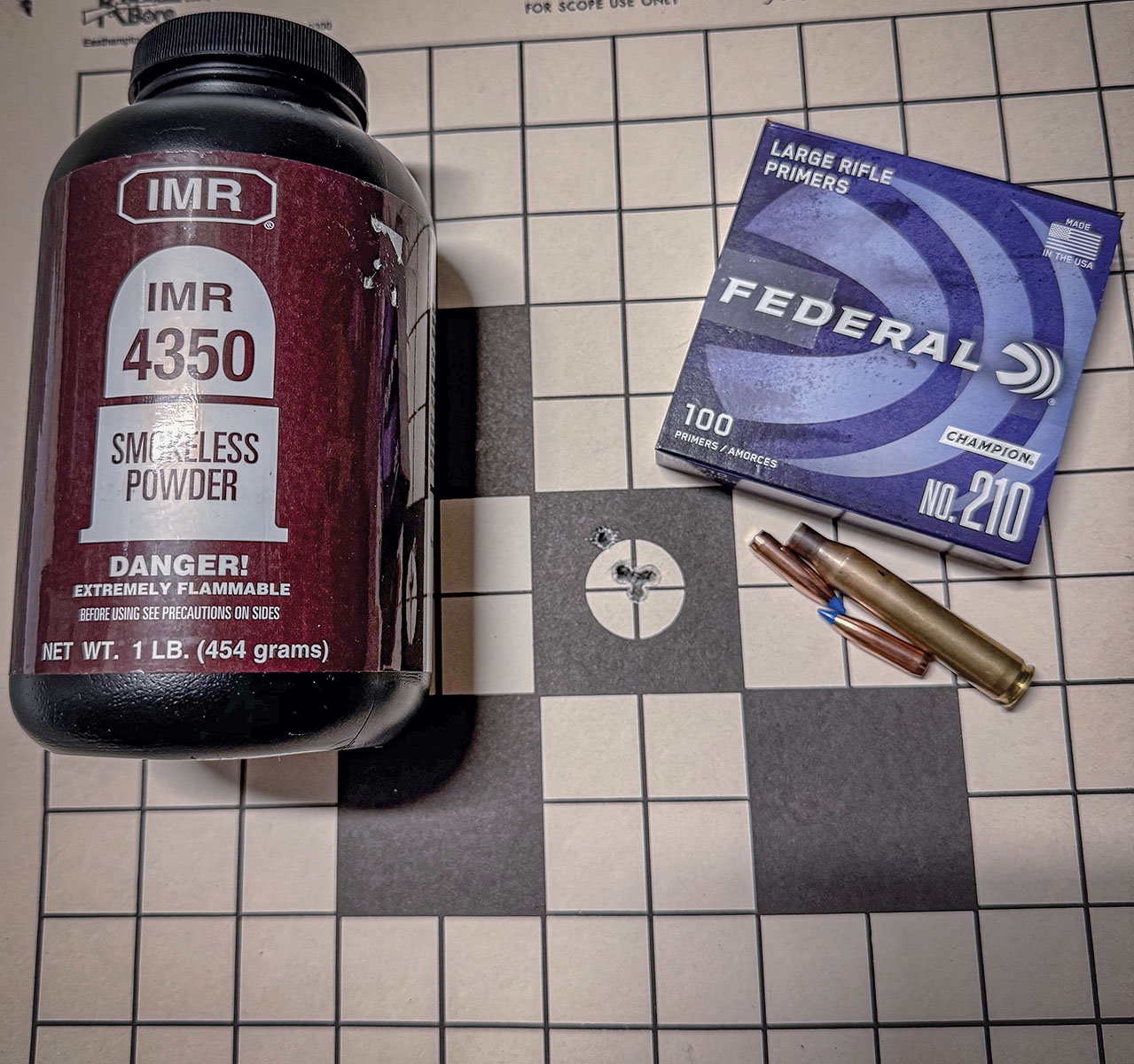
The fourth offering was a 117-grain Hornady Superformance SST, which shot a five-shot group measuring 1.04 inches, average velocity of 3,032 fps with SD 19 and ES 52.
The fifth offering tested was a 110-grain Hornady Precision Hunter ELD-X, and with no surprise, these shot well, almost stacking all five on top of each other, one shot flew out of the group to have a five-shot group measuring in at .95 inches, without that one flyer, the four-shot group measured in at a .44-inch group, average velocity of 3,098 fps with SD 3 and ES 10. For me, those numbers are very impressive. This would be my go-to for longer-range pronghorn hunting as the ELD-X is known for expanding well at lower velocity.
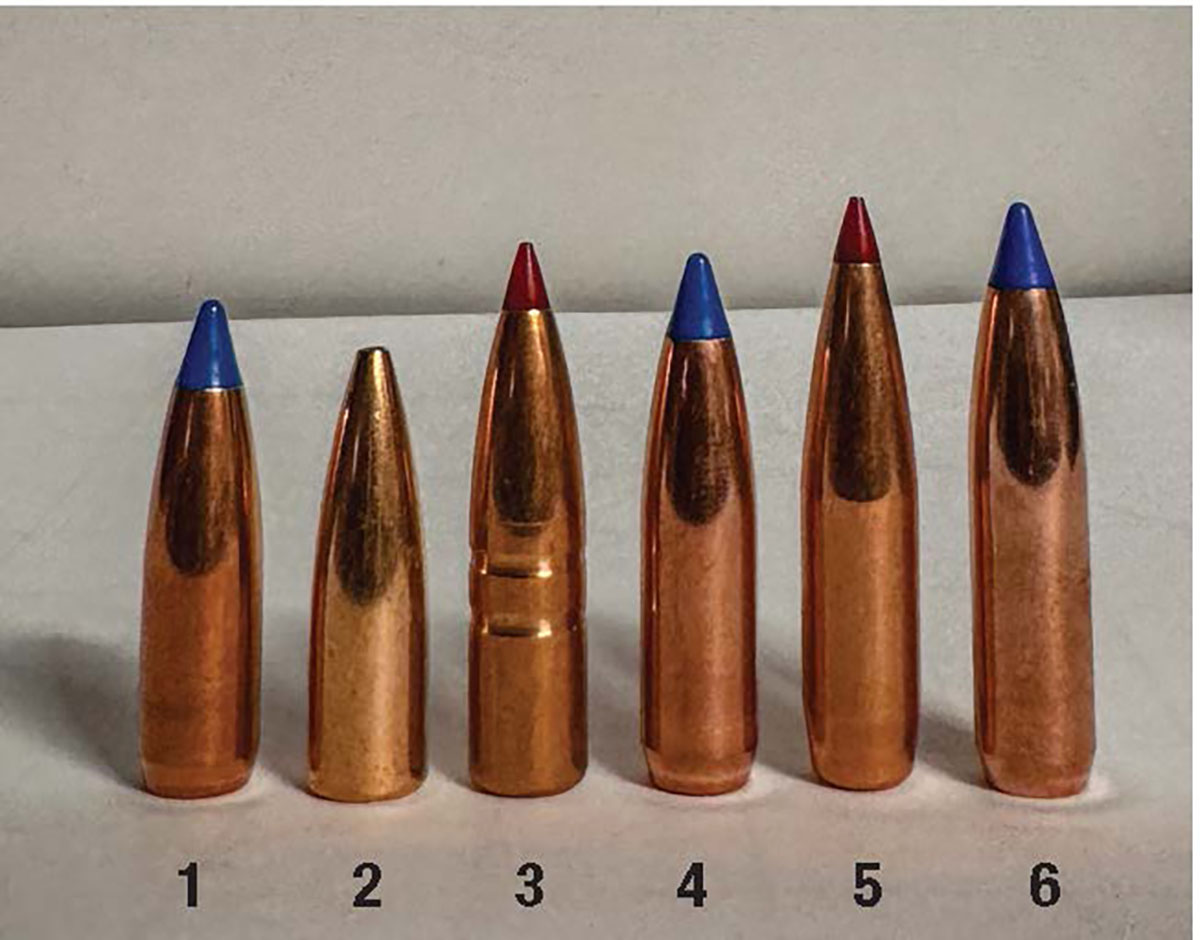
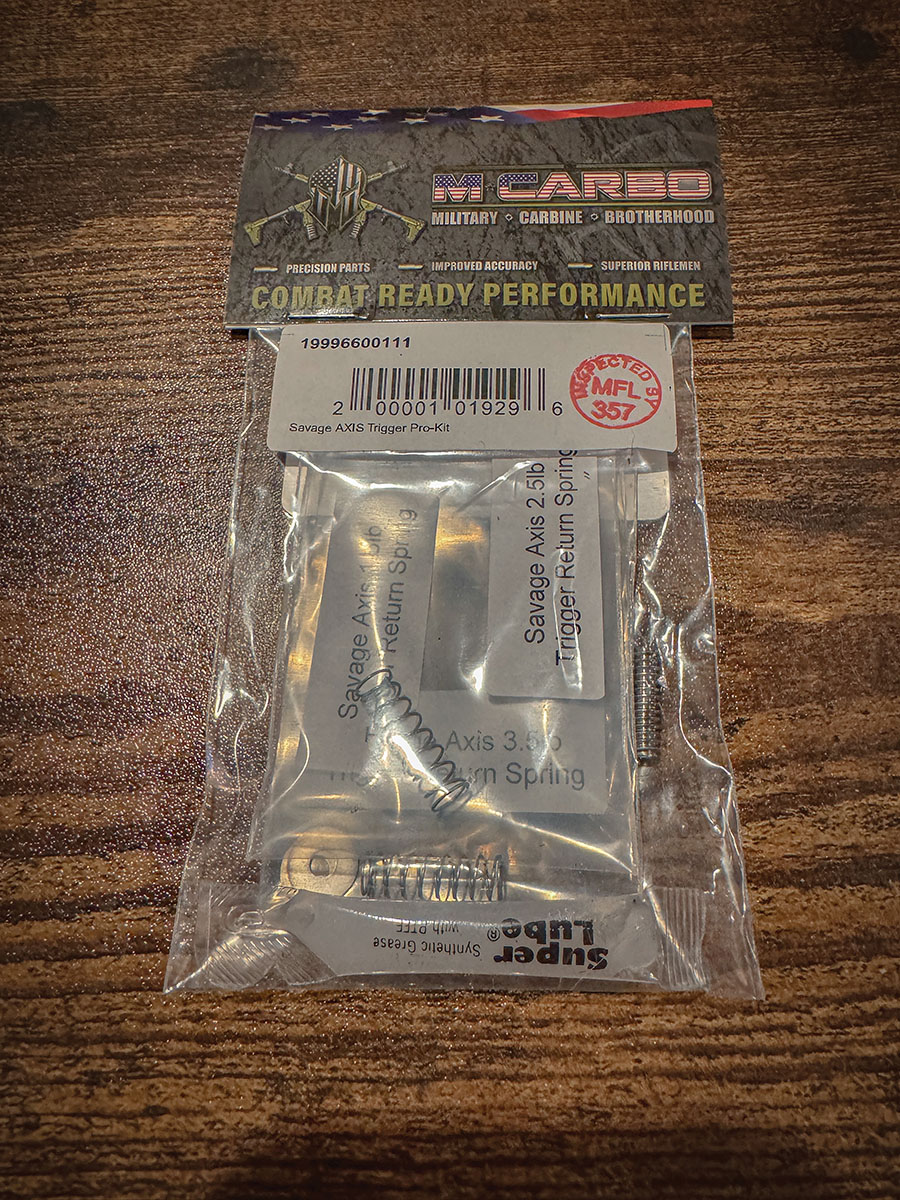
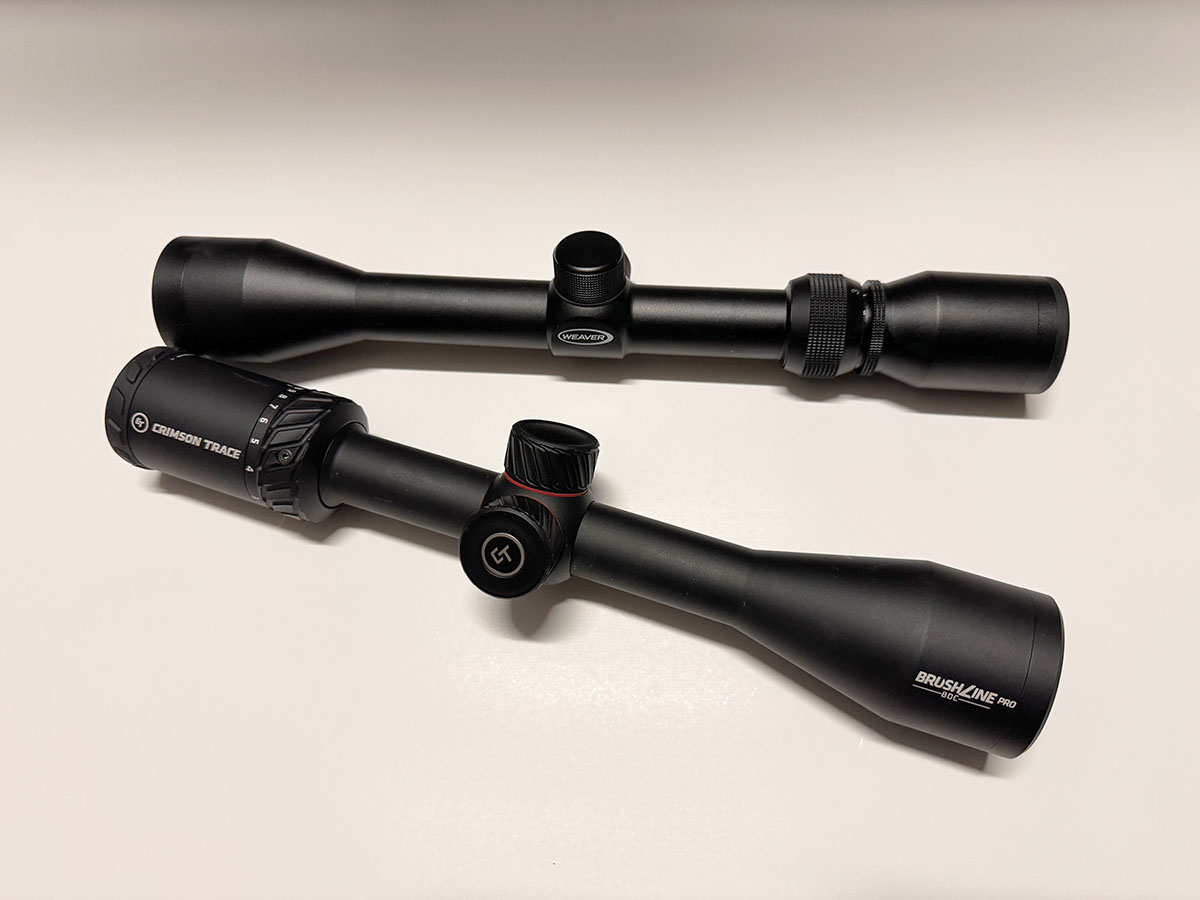
As for factory ammunition, I felt the rifle performed well for the setup. Still, of course, we must explore the wonderful world of handloading or we would be leaving potential outstanding groups out there as well as the full potential of the rifle. I came up with ten different offerings to try out from an 85-grain bullet up to a 115-grain. All the handloads were done with Nosler 25-06 head stamp brass and Federal 210 primer set to have two thousand below flush. All brass was fire-formed before starting the test, then full-length resized using a Hornady die along with a Hornady bullet seating die with the MicroJust seating stem for precision seating depth.
The first bullet and powder testing utilized an 85-grain Nosler Ballistic Tip with Alliant RL-15. The best five-shot group measured 1.30 inches, with an average velocity of 3,334 fps, with a SD of 3 and an ES of 9.
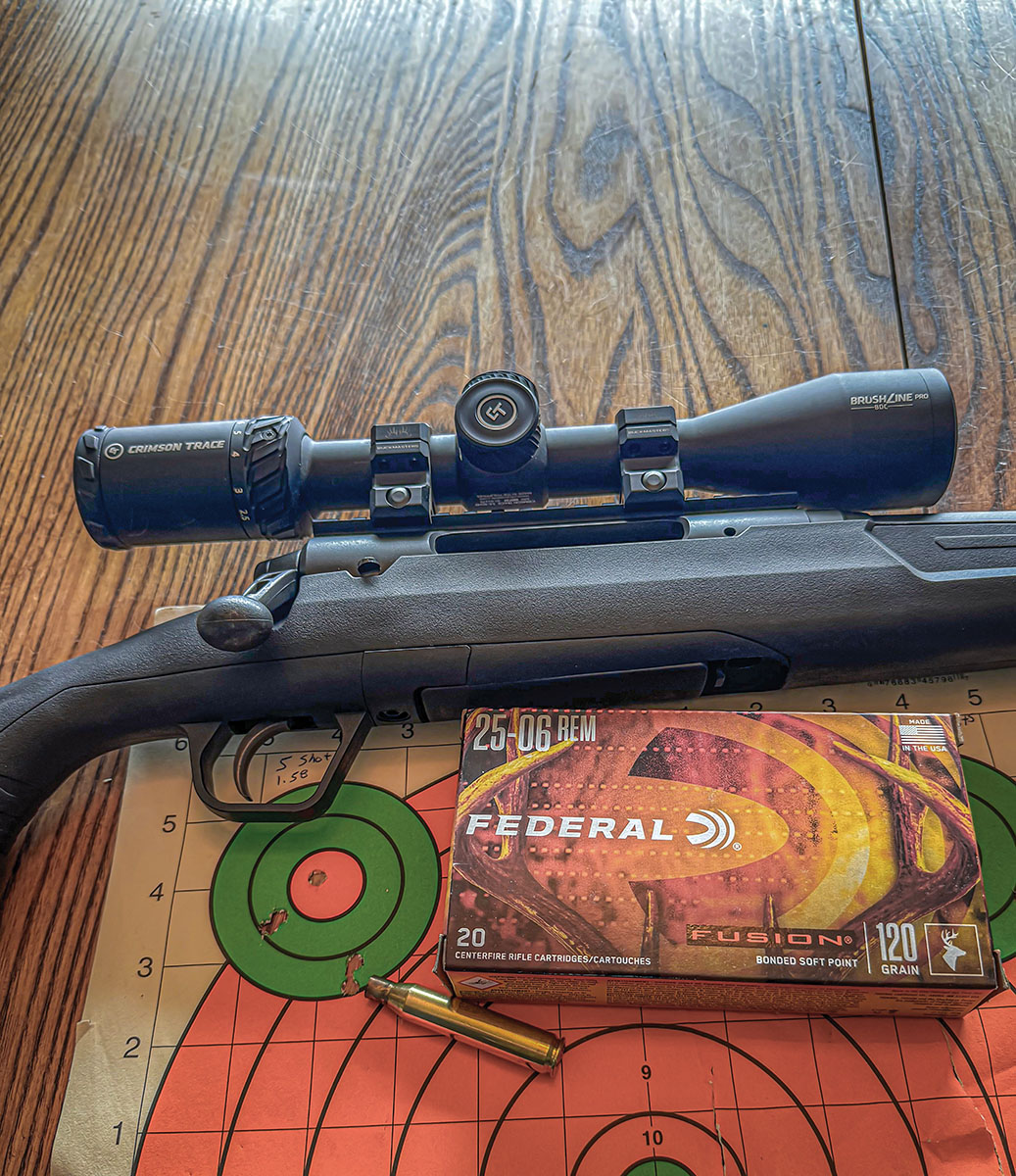
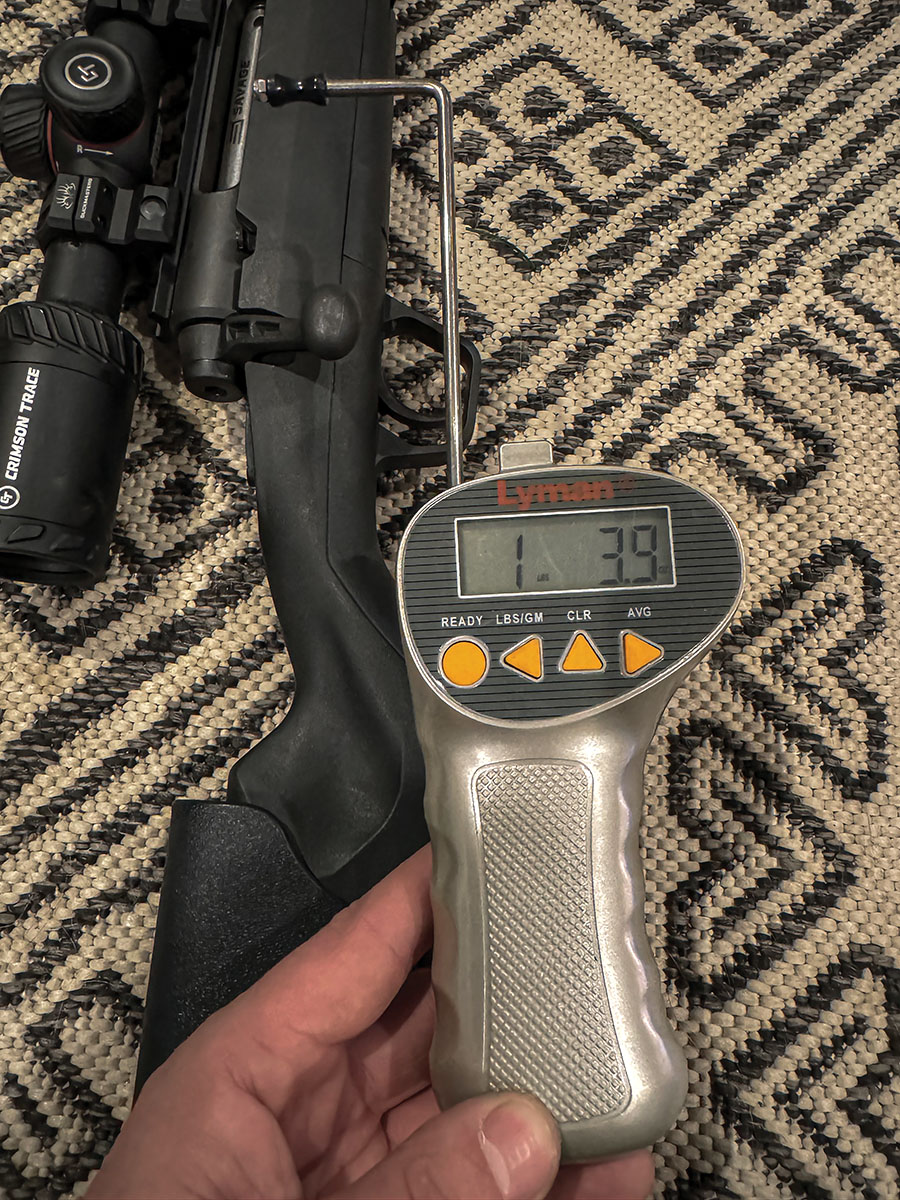
The third test was with an 87-grain Speer TNT Varmint with Winchester 760, the best five-shot group tested measured in at .58 inch with an average velocity of 3,177 fps, a SD of 29 and an ES of 85. These bullets have always shot well for me, so I was not surprised to see everything I shot under a one-inch group.
The fourth test was conducted with a 90-grain Hornady CX and IMR-4831. The best five-shot group measured 1.32 inches, with an average velocity of 3,263 fps, a SD of 12 and an ES of 33. These are the only copper bullets I tested. I got great velocity out of this combo. It did show slight signs of pressure with my best loading.
The fifth test was conducted using a 100-grain Nosler Ballistic Tip with IMR-7828ssc. The best five-shot group measured 1.27 inches, with an average velocity of 3,164 fps, a SD of 13 and an ES of 37. This loading seemed to tighten up at my maximum charge, showing slight pressure signs with some primer cratering.
The sixth test was with a 100-grain Nosler Ballistic Tip with IMR-4350; this powder is one of my favorites to load within the 06 family of cartridges, as it has always performed well. The best five-shot group tested measured in at .67 inches with an average velocity of 2,974 fps, a SD of 7 and an ES of 19. This powder and bullet combo performed well in my testing, with all groups coming in under .90 inches and showing great SD and ES. If you are a handloader, I would recommend this combo.
The seventh test was with a 110-grain Hornady ELD-X with IMR-4831, the best five-shot group tested measured in at 1.22 with an average velocity of 2,912 fps, a SD of 12 and an ES of 24.
The eighth test used a 110-grain Hornady ELD-X with Hodgdon Hybrid 100V, the best five-shot group tested measured in at 1.33 inches with an average velocity of 2,975 fps, a SD of 9 and an ES of 26.
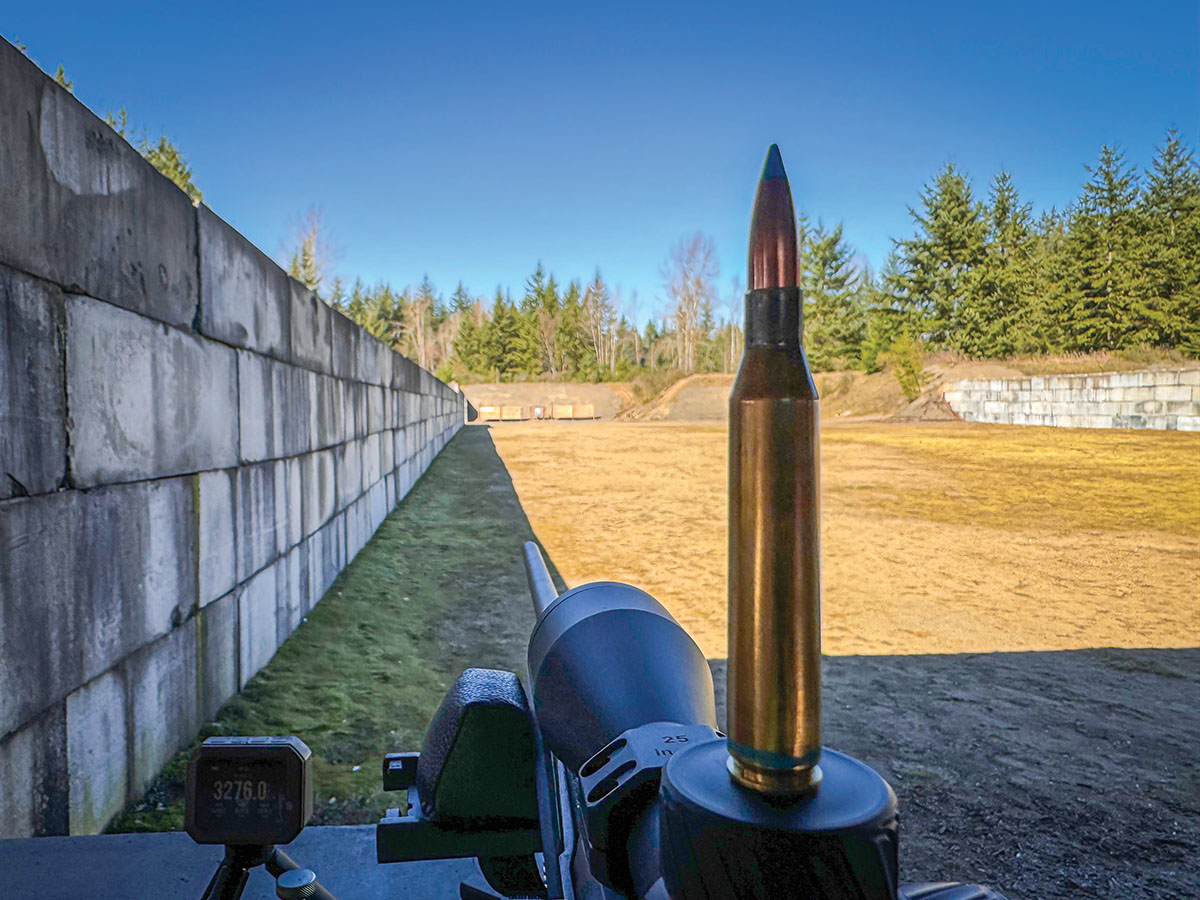
I consider this a win for the rifle, as it offers two suitable factory-loaded options: one for varmint hunting and another for medium-game hunting. As for handloads, any of the ones listed would work for the rifle’s needs, but I was very pleased with the 100-grain Nosler Ballistic Tip and IMR-4350 combo, which achieved close to 3,000 fps. It is a good flat shooter for coyotes or Blacktail deer in the Pacific Northwest. For a budget hunting rifle coming in under $600 with an optic, scope rings, trigger spring upgrade and a cheek piece riser, these results are more than adequate for hunting 500 yards and in. The one thing I haven’t touched on yet is that the Savage rifle makes it very easy to swap out a barrel with a pre-fit barrel down the road, such as a new 25-06. This does add good value to the Savage rifles. There are good aftermarket stock or chassis options as well to upgrade to down the road. There is also an option to bed the action, but I think if you’re willing to invest time and money, you’d be better off upgrading the stock to something like a Boyd’s At-One and then bedding that. You’ll likely have a great shooting rifle.
Overall, I am very pleased with how the rifle performed and will make a great first rifle for my son to create memories he can look back on and maybe one day pass the rifle down to his child to do the same thing.


